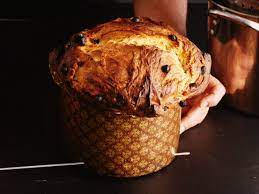Panettone is a must for Italians at Christmas. Mothers start piling it up early in the season, ensuring they won’t run out.
It isn’t an easy dessert to make and requires a few unusual ingredients. It’s also time-consuming and labor-intensive. However, the rewards are great. There are many legends about its origins.
Origin
Panettone’s history is closely linked to the Italian Renaissance. One legend says that a scullery worker named Toni invented it after a disastrous dessert at a ducal banquet. Another says that Ughetto degli Atellani developed it to impress his wife, Adalgisa, and win the favor of the Duke of Milan.
Whatever the truth of its origin, this leavened cake has become one of Italy’s most characteristic treats – and it is celebrated worldwide at Christmas time.
It’s also a symbol of Milan. Nearly every person in the city of Milan knows that they should save a slice from their panettone to eat on 3 February, the feast day held in honor of St Blaise, who is said to have saved a child from choking on a fish bone by giving him a piece of bread. In fact, a traditional ritual involves saving a piece of panettone at Christmas to eat on the day dedicated to the saint (known as Sant’Antonio). It is also a common snack among commuters.
History
Despite being around since the middle ages, panettone has never stood still. Bakery collaborations with luxury fashion houses; Instagram accounts that boast open crumbs and outlandish flavors; and massive panettone fairs are just a few examples of how the humble dessert continues to evolve, even in our modern, fast-paced world.
Panettone’s history began with an act of love. Legend has it that a falconer, Messer Ulivo, fell so deeply in love with the daughter of a baker that he left his profession and started working for her father. He is credited with inventing Panettone, which is consumed on 3 February to celebrate the memory of Saint Blaise who saved a young boy from choking on a fish bone by forcing him to swallow a piece of bread (*1).
By the early 1900s, mass production gave the dessert its domed shape and Italians bringing it with them to the Americas made it an integral part of Christmas in South American cities. Panettone is a staple at Peruvian holidays and even celebrated on the country’s independence day, a testament to its complete integration into local culture.
Recipes
As a rule of thumb, the less flour you add to the dough, the lighter your Panettone will be once it’s baked. Instant yeast is also recommended to reduce rise times and create a more consistent crumb.
Artisans carefully monitor dough hydration, pH and yeast activity to ensure their hard-won domed loaves don’t collapse on themselves like a souffle gone wrong. Some even hang them upside down for hours to set the cake.
Panettone can be eaten warm right out of the oven or chilled, toasted, or even made into French toast or bread pudding. It can even be frozen, though it’s best thawed at room temperature. Panettone is rich, so serve in small slices. It will keep at room temperature for about 5 days, and if stored correctly will last up to 3 months in the freezer. A great way to enjoy it is with a cup of coffee or espresso, as part of a sweet breakfast or dessert course after dinner.
Variations
A good panettone will be moist and soft with a distinctively sweet flavor. It should be light and airy with a lot of raisins, candied citrus peel and butter. In the modern market, many large-scale versions of this cake are produced, but artisan bakers still make traditional panettone, here and abroad, using a variety of recipes.
While the shape of a Panettone makes it look like a cake, it is technically a leavened bread. It is baked in a unique mold giving it its characteristic, tall shape.
It is traditionally eaten for Christmas and New Year but can be enjoyed any time of year. There are countless variations of Panettone, some including chocolate and other exotic combinations such as foie gras, pears, premium red chicory or Parmigiano Reggiano cheese. It is an unusual dessert that combines sweetness with contrasting salty, bitter and even savory flavors. Unlike many cakes, this one is not soaked in rum.





